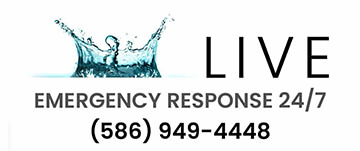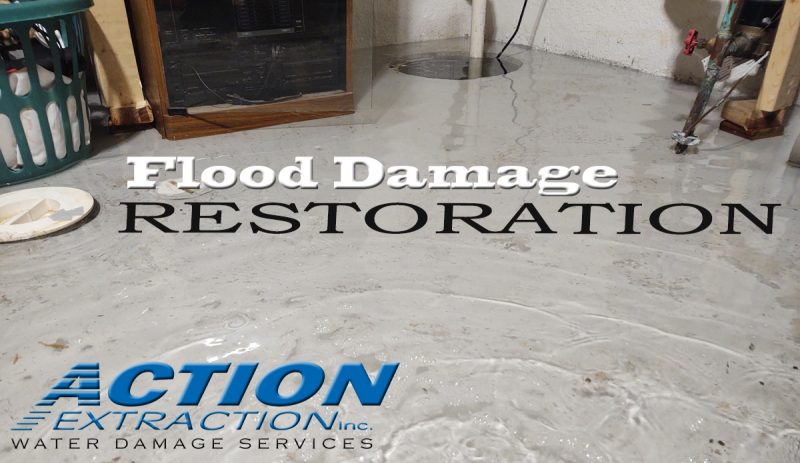Flood Damage Restoration Methods That Work
Flood Damage Restoration – Macomb County
There is only one thing that remedies the shock of encountering water damage in your home. Complete restoration with new building materials, carpet, paint and whatever else required repair. Until then something just doesn’t feel right because complete recovery is left pending. Specialists in the recovery industry employ flood damage restoration methods that work quickly and efficiently. Witnessing the joy on a customer’s face upon project completion makes the satisfaction of a jobs conclusion, just that much greater.
Flood damage restoration will restore a home’s once cherished condition when tried and true principles are used. Contamination, mold, mildew and other microorganisms are easily eliminated and order restored when the right flood damage restoration methods are used. The range of service will deeply depend on the class and category of the resulting water damage. Service may be slight with a simple water extraction from carpet or a complex structural drying process with reconstruction.
What Is Flood Damage Restoration?
Flood restoration is an applied science that relies on producing rapid air movement for water evaporation and humidity removal through dehumidification. It is this cycle that removes water from your home and restores it to a livable, pre-damaged condition. The process needs to begin as soon as possible to keep the property free of mold growth and bacteria. Standing water, wet materials and high humidity is the ideal environment for such dangerous microorganisms to thrive.
Building materials like dry wall, carpet and flooring when exposed to water are capable of producing an environment at risk result in allergic reactions, illness and other adverse health effects.
Flood Damage Restoration Methods Can Be Complex
Water cleanup is not always a routine endeavor, but sometimes will be a complex and challenging task. It is usually more involved than mere water extraction and applying a germ killing agent. Water often gets trapped in walls, insulation and other porous materials. Especially difficult is attempting to dry wet ceramic tile, which is the most difficult thing to dry. Water gets trapped between the cement and wood subfloor making specialty drying techniques necessary but with no guarantee of success.
Some Flood Damage Restoration Methods Will Not Succeed.
In some cases, materials may be destroyed beyond the scope of restoring making replacement the better option. This is often true of carpet, dry wall and insulation as they can harbor mold and other dangerous germs which will create more significant problems.
The professionals at Action Extraction follow the IICRC Standards for restoration and recovery which weighs the benefits of drying a material against the need for replacement. In many cases it is better to remove and replace a wet material than to dry it out. If contamination is suspected in any wet material than drying should not be considered, replacement is always the better option.
IICRC Certified Flood Damage Restoration Methods
The Institute of Inspection, Cleaning, Restoration and Certification (IICRC) is the governing body that has formulated the standards for adequately restoring a water-damaged property to its previous orderly state.
Only certified firms that have undergone specialized training are equipped to manage all stages of flood damage cleanup. Action Extraction serves Macomb County and all southeast Michigan as a certified firm following industry standards to ensure your home is dry, clean and safe.
IICRC Qualified Firms Can Manage
- Flood water removal
- Sewage cleanup
- Mold removal and mitigation
- Storm damage repair
- Complete structural drying
- Basement flood restoration
- Mold mitigation & cleanup
- Sump pump failure restoration
- 24 Hour emergency flood recovery
- Evaluation & Insurance estimates
The Flood Damage Restoration Method
When a water damage incident such as a broken, frozen or burst pipe floods property, a rapid response is critical and should be demanded of a restoration company. We at Action Extraction are on call 24/7 day or night to manage any and all flood emergencies when they happen. We answer your call LIVE and can answer any question or dispatch our emergency restoration team of experts. From the moment we receive a call for help we are committed to an arrival time of less than 1 hour.
Our 5 Water Damage Restoration Steps
Free Inspection and evaluationWater RemovalCleaning and SanitizingStructural Drying with DehumidificationRestoration and Repair
Each advancing step in our restoration process is designed to maximize the results ensuring that all water and contaminants are eliminated completely.
Here Are Our Detailed Flood Damage Restoration Steps
Step 1: Free Inspection And Evaluation
We provide a thorough damage assessment of all water damaged properties prior to being contracted for service by a client. It is our way of helping property owners during some frustrating moments; know the scope of related damage and the process for restoration. During this inspection, a flood restoration specialist will make recommendations based upon the results of the inspection. They will utilize the latest in cutting edge technology to find all hidden moisture.
Our water restoration experts will give attention to any and all wet building materials requiring drying service. The porosity of the impacted building materials will help determine how much water absorption occurred, how much vapor exists and how to remove it.
The scientific moisture detection instruments we use will measure the amount of moisture in a material and what protocol of mitigation is needed. The restoration will be predicated on the results of our inspection. The category and class of the water damage will be equally determined allowing for a unique drying strategy for your particular needs.
Our water damage experts will identify the source of water if it is not already determined prior to our arrival. It is important that the source be stopped to assure no additional damages may incur. Lastly your water damage category will be identified as 1, 2 or 3.
We will inform you of the approximate costs for restoration and assist in the insurance claims process should you decide to make a property claim.
Step 2: Water Removal
The second step in the restoration process should you authorize service is to remove any standing water on your flooring. We use commercial truck-mount extraction systems to eliminate all unwanted water rapidly. As long as standing water is languishing on flooring surfaces, they will continue to absorb water that will soon deteriorate, delaminate and destroy your floors. Rapid water removal will reduce damages to your property and immediately stop further absorption in materials.
Basement flooding from floor drains is common after heavy rains making water extraction particularly important as basements are known to incur mold growth when they become wet. In some cases the basement flooding is so extreme with water depth so deep a submersible water removal pump may be required.
Once all standing water is completely removed a second inspections will follow to determine the remaining moisture levels and ascertain if flooring whether carpet or hardwood floors can be restored. In many cases replacement is the better option.
Step 3: Drying And Dehumidifying
After all water is eliminated and surfaces disinfected with plant based anti-microbial agents the flood damage restoration methods for structural drying must begin. We place commercial air movers to induce evaporation and dehumidifiers to eliminate humidity.
At this phase, your property may appear dry, but moisture is invisible to the naked eye and progress must be gauged using moisture meters capable of detecting moisture in materials. If materials are allowed to remain with high moisture content they will suffer more damages and mold growth. Action Extraction water restoration prevents this by fully drying all traces of moisture.
Step 4: Cleaning And Sanitizing
Detailed professional cleanup of all affected surfaces is necessary on all property restoration projects. Water contains particulates and various contaminates that must be removed with disinfectants. We use only safe “GREEN” all natural plant based germ killing agents to restore properties after flooding. Our cleaning is performed by certified technicians with many years of advanced training and experience.
Cleaning Surfaces In The Flood Damage Restoration Methods May Take The Form Of
- Spray application and hand wiping
- The dip method where contents are placed in a cleaning solution
- Dry cleaning
- Wet cleaning
- Fogging
Action Extraction Restoration professionals capitalize on detailed cleaning and may additionally choose a foam technique, abrasive scrubbing and an immersion cleaning process also known as a dip method to ensure every item is thoroughly sanitized and deeply cleaned as good as possible. When this step uncovers mold we practice safe strategies to assure it does not spread to other areas.
If the cleanup is sewage related there is a heavy presence of bacteria and potentially 81 various types of harmful viruses. Because high risk management is dangerous to our professionals we will be covered completely in professional PPE outfits specially used in hazardous cleanup. Dual cartridge respirators, safety eyewear and gloves are all important safety requirement during the flood damage restoration methods.
During this stage our restoration experts will be removing from your property all garbage bags filled with debris, waste, and other damaged materials that we had to remove during the cleaning and sanitizing phase for mitigation.
Step 5: Complete Structural Drying
Our final step in the flood damage restoration method is complete structural drying. During this stage of restoration our mitigation professionals remove all moisture assuring a dry environment that is not conducive for mold growth. Once all humidity is removed the property is returned to pre-flood condition and a state that is safe.
Any materials that experienced permanently damage or were removed are now ready for the repairs stage in the flood damage restoration method. New carpeting can be placed, dry wall repairs made, fresh painting can begin and contents can be brought back in their original place.




